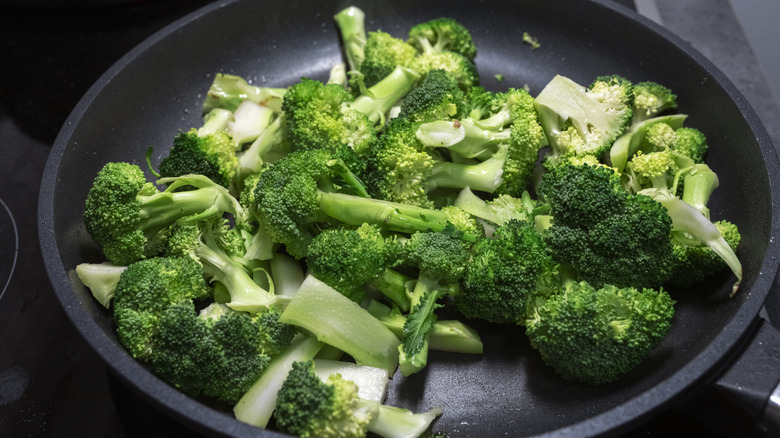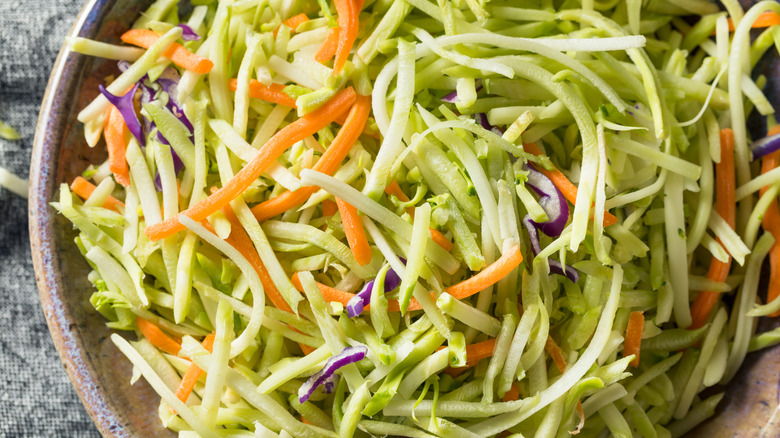Chef Reveals Why You Shouldn't Throw Out Broccoli Stems
When it comes to broccoli, the florets usually get all the glory. Sure, the bite-sized trees are worthy of all the good press they get these days (never mind that George H.W. Bush once banned the vegetable from the White House and Air Force One), but the stems still don't get the credit they deserve. Perhaps, like many home cooks, you're accustomed to chopping the crown from the bulky stem and going on your merry way. If so, you're leaving a lot of good food on the table (or off the table, if you want to get technical). As Andrew "Kappy" Kaplan, host of the "Beyond the Plate" podcast and Foundation for Fresh Produce Have a Plant ambassador, exclusively told Mashed, "They're underrated and delicious."
Though they taste similar to the florets, broccoli stems are often described as milder and sweeter in taste, much like kohlrabi. Because they have a vastly different texture, though, they require some additional attention. "Trim away the tough outer layer, then either blanch or roast them along with the florets," Kaplan advises, adding, "Cut the stems into similar sizes for even cooking." Once cooked, you can use these stems in loads of broccoli recipes the whole family will eat up. They can be eaten alongside florets as a delicious side, blended up to use in a traditional Italian broccoli pasta, or added to a soup or pesto-like spread.
You can eat the stems raw, too
Just because broccoli stems are tougher and more fibrous than the florets doesn't mean you can't eat them raw. "They're also great julienned for slaws," Andrew Kaplan tells Mashed. However, removing the outer layer is a must, as it's nearly impossible to gnaw through without cooking. A vegetable peeler will work just fine for this task, but if you find that it's difficult to manage on particularly lumpy stalks, you can try flexing your knife skills instead. "Personally, I like to cut a thin strip off of a long side, then lay it flat on a cutting board and cut off another thin strip so it's flat, turn, and so on and so forth until all sides are trimmed," says Kaplan. While you're at it, go ahead and trim the bottom couple of inches off of the stem, as the part closest to the ground naturally gets woody as the plant grows.
Homemade crudite is always better than store-bought because you can add special touches most folks won't expect — like thinly sliced broccoli stems. As Kaplan explains, "They'll make a crisp, flavorful addition to a crudité platter." Try slicing them into the shape of matchsticks and serving them with this homemade ranch dressing recipe for a refreshing upgrade to the classic combo.

